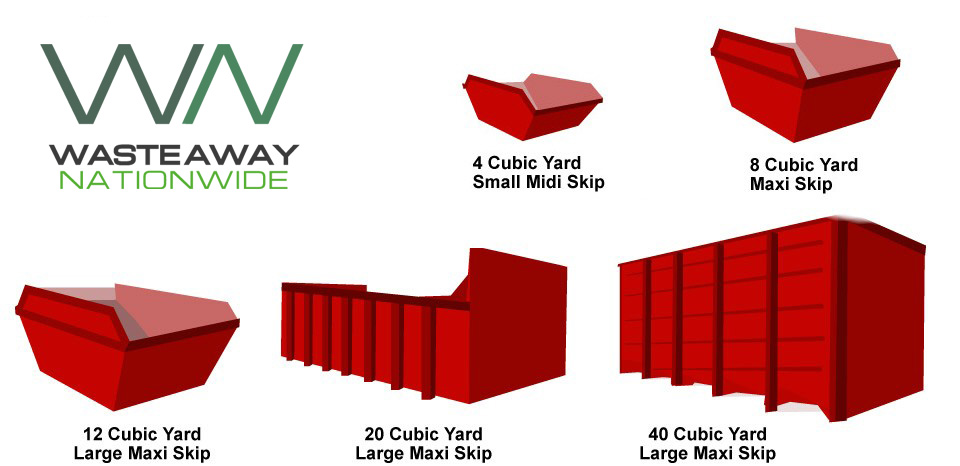Sometimes waste removal jargon can be difficult to understand. You’re looking for a skip that will fit your whole kitchen and living room in… how much space in cubic yards will I need? What’s the difference between builders skip and midi skip? What are the different types of waste? All of these questions understandably need to be answered, but sometimes it can be overwhelming to understand what you need to know from one telephone conversation. Don’t worry, we have the ultimate glossary to the waste removal jargon so you can understand, instead of guessing what to do.
Here at Wasteaway UK, we want to make sure that everyone knows what service they’re getting- so you don’t have to guess what size skip you need, or what to do with the skip once you’ve got it. We’ve put together the ultimate glossary for all the waste removal jargon you don’t yet understand. Read on to learn something new today!
Waste types
Understanding waste types is crucial to make sure we’re separating the waste correctly and better helping the environment. Separating your WEEE waste and commercial waste is absolutely essential!
Builders’ waste– This is a very common term used by people in the construction industry and waste removal companies. Builders’ waste is typical of the remnants left behind after a construction project. Although builders’ waste is the most common jargon used, you may have heard of other terms used to describe this type of waste including ‘construction waste’ and ‘bulky waste’. This waste can include soils, rubble, general waste, and other items lying around.
WEEE waste– Don’t let your instinctive thoughts take over! WEEE actually stands for ‘Waste electrical and electronic equipment.’ This type of waste is as it says on the tin, anything electrical! For example, this could be; old batteries, plug sockets, fridges, cookers, microwaves, computers, etc.
Hazardous waste– Look out for these products as they pose a risk to the safety of people and the environment. This is any type of waste that has the potential to be hazardous to people or the environment such as; asbestos, chemicals, batteries, solvents, pesticides, oils. Unfortunately, hazardous waste cannot be put into skips, unlike builders’ waste.
Understanding skip hire sizes
Now understanding what the skip size to suit your project will be! You definitely don’t want to get to the end of a project to see that you’ve still got waste that still needs to be removed. Making sure you hire the right sized skip will help you finish your project on time, with fewer costs.
Builders skip (8-yard skip) – In the waste removal industry, this term is commonly used to describe an 8-yard skip. This is the most popular skip size on the market hence why waste removal companies call it the ‘traditional builders skip’. This is the biggest skip available, making it suitable for major construction projects so that rubble and any builders’ waste can be disposed of with enough space.
Small builders skip (6-yard skip)- Using the same concept as a builders skip, the small builders skip is suitable for smaller construction projects. Builders most commonly use a builders skip or a small builders skip.
Midi skip (4-yard skip)- A midi skip is always used to describe a 4-yard skip, which is suitable for garden waste removal services and other small projects.
Additional waste removal common jargon
Man and van rubbish collections– Man and van collections are more suitable for when you need urgent collection. However, you shouldn’t mistake this service with ‘house removal’ services which will collect furniture and other bulky items. Some items you can give for a man in a van include Furniture, Whitegoods, Bric-a-brac, General rubbish, Recycling, Kitchenware and appliances, Mattresses, Garden waste.
A cubic yard– This is the metric that is used to measure the skip. A cubic yard takes into consideration the width, length and height of any container or service. Cubic yards also measure the amount of waste that can be placed into the skip, so if you’re good at maths, you can calculate what skip size you need.
American style fridge– “I’m sorry, um… what’s the difference between my fridge and an American style fridge?!”. When discussing an American style fridge, we’re usually trying to estimate how large your fridge is. Generally, an American style fridge will have two doors and be longer in size, while a standard domestic refrigerator will have a single door and be shorter in length.
If you’re looking for waste removal in the UK, take a look at our website to book online or phone today!







